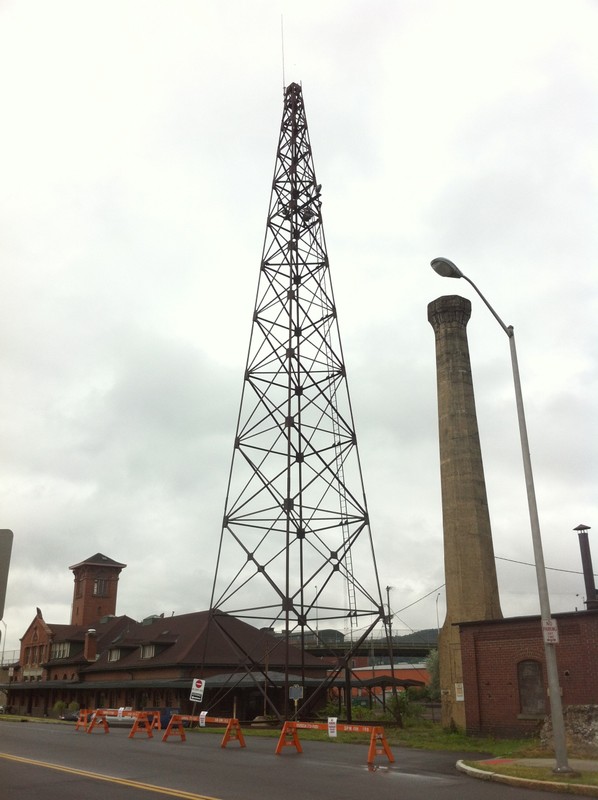Marconi Tower
Introduction
Text-to-speech Audio
This 97-foot structure, near the NYSEG stadium in downtown Binghamton, is the last remaining of four such towers erected by Guglielmo Marconi and successfully used to test the possibility of transmitting telegraph signals to trains moving along the adjacent Lackawanna Railroad line. The tower was constructed in 1913, with a 150-foot long aerial connecting it to a second tower (dismantled in 1925) in the vicinity of Chenango Street. (Another pair of towers, neither of which survives, was located in Scranton, PA.)
Images
Marconi Tower in 2012

Historic Marker

Backstory and Context
Text-to-speech Audio
Guglielmo Marconi wished to expand the use of the radio to include vehicles that moved on land as well as water and test the possibility of transmitting telegraphic signals to moving trains along the Lackawanna Railroad system in the Northeast United States. Two cities - Binghamton, NY and Scranton, PA - were chosen as the two tower sites to be built by the Lackawanna Railroad using Marconi’s construction and design in early 1913. Each tower site consisted of two towers linked together with 4 aerial wires. Radio telegraph equipment was placed within the railroad stations and comprised of a 2 KW 500 cycle quenching transmitter made by the Marconi Company.
On November 27th 1913, the first "official" wireless transmission was transmitted from Scranton, PA towards the train traveling to Binghamton, NY at 60 miles per hour. In all, 350 words representing several pieces of news were clearly picked up by the operator aboard the train.
This is the last of the four towers to remain standing. It is constructed of open grid framed carbon steel and stands 97 feet 4 inches tall. The tower is solid and stable despite its neglect and age.
On November 27th 1913, the first "official" wireless transmission was transmitted from Scranton, PA towards the train traveling to Binghamton, NY at 60 miles per hour. In all, 350 words representing several pieces of news were clearly picked up by the operator aboard the train.
This is the last of the four towers to remain standing. It is constructed of open grid framed carbon steel and stands 97 feet 4 inches tall. The tower is solid and stable despite its neglect and age.
Sources
Most information derived from http://www.everythingradio.com/Marconi%20Tower.htm (since removed)
Additional information from "The Lackawanna Tests" Wireless Age, Jan 2014) and "Wireless for Railways" Wireless World, Feb 1914
Additional information from "The Lackawanna Tests" Wireless Age, Jan 2014) and "Wireless for Railways" Wireless World, Feb 1914
